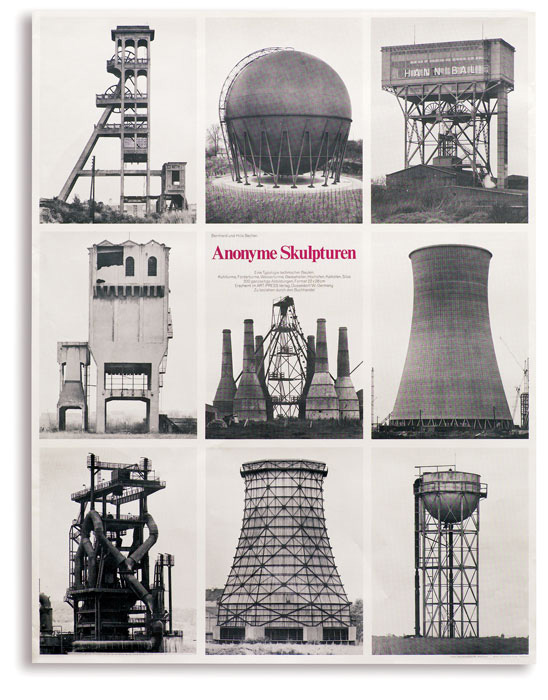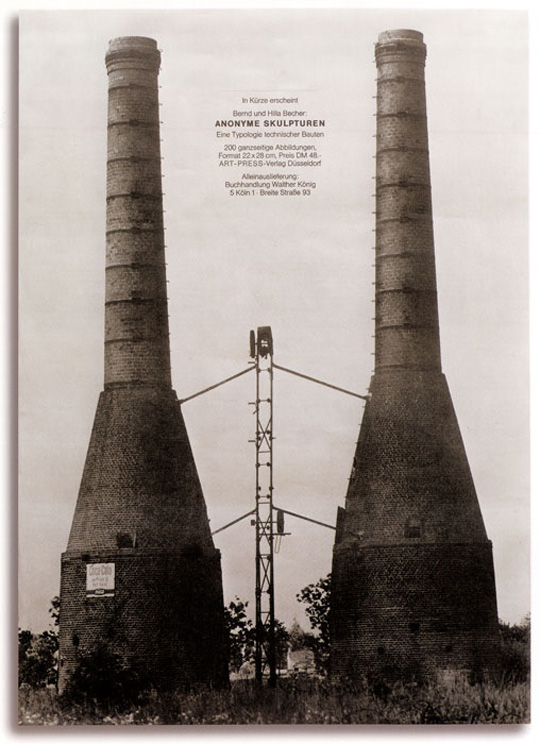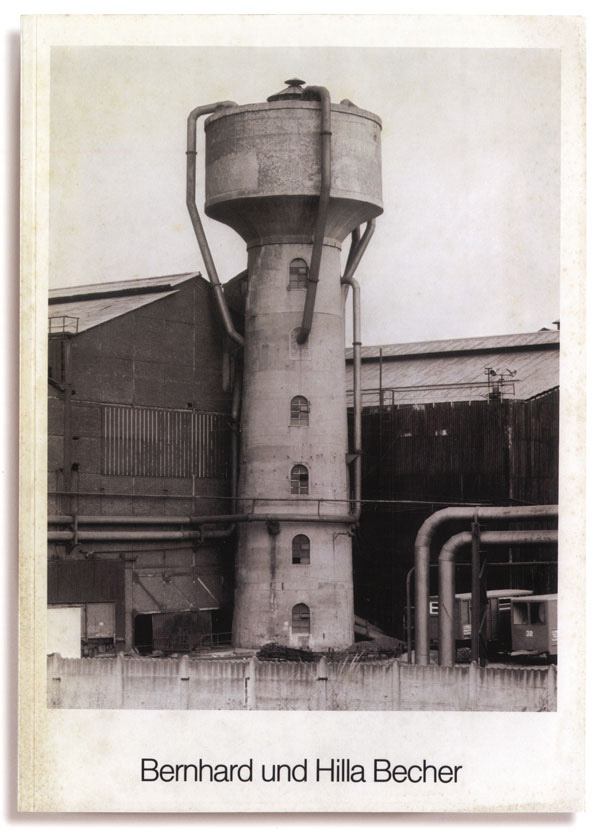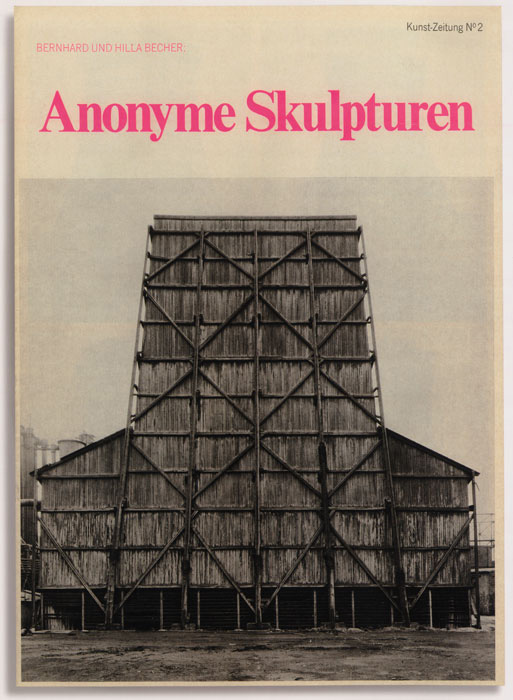[Spring/Summer 2011]
by Philippe Guillaume
When we think of the work of Bernhard and Hilla Becher, a classical eighteenth-century mansion, pristine gardens where Madame de Staël walked, and a spectacular landscape overlooking a lake with the Alps as backdrop is hardly the scene that comes to mind. Strikingly different from the industrial landscapes that captivated the photographers during the second half of the twentieth century, this locale, the Musée de l’Elysée, is the setting for the latest exhibition of their work. “Bernd & Hilla Becher – In Prints 1964–2010”1 offers a distinct view of how, over five decades, the German husband-and-wife team selectively organized and staged their photographs through an array of printed supports, including monographs, posters, catalogues, pamphlets, invitation cards, and postcards. This meticulously crafted presentation of the numerous printed items created by the Bechers from their photographic projects speaks directly to their work’s implicit relationship with material culture.
In 1957, the Bechers began to devote themselves to the methodical photographic representation of nineteenth- and twentieth -century architecture of heavy industry in Europe and North America. This lifelong project, which culminated with the Grand Prize for Sculpture at the Venice Biennale in 1990, is recognized for its important link to 1960s and 1970s conceptual art, typological study, and topological documentation, and its key influence on “New Topographics” photography starting in the mid-1970s. The Bechers’ project was strongly influenced by August Sander’s typological precedent from the late 1920s, Face of Our Time, and the German “New Objectivity” period, which inspired a “love of depicting individual architectonic objects in precise detail.”1 The meticulously planned photographs of different spaces and material details of industrial buildings from the modern era, such as water towers, factory halls, half-timbered houses, and blast furnaces, were mediated through various printed supports that are neatly grouped in different spaces in the gallery. Books – such as their first monograph, Anonyme Skulpturen (1970) – played a key role in the circulation of their photographs. Although large-format cameras and panchromatic film were their primary medium for photographing the modern industrial structures and landscapes that compose their vast oeuvre, they consistently published a wide variety of documents that have greatly contributed to the distinct visual aesthetic for which they have become emblematic.
The Élysée exhibition is the first one in which the Bechers’ work has been presented almost exclusively with the various printed pieces produced for their projects over almost half a century. The only archival pieces are ten gelatin-silver prints from the 1968 limited-edition catalogue Industriebaute. The series, first presented with its custom-made box in 1968 by the Mönschengladbach Städtischen Museum, is seen as a landmark, marking the Bechers’ first recognized work of art. Prior to this, their photographs were intended and received as traces or unique records of a distinct architecture that they viewed as rapidly waning. According to Bernd Becher, “These buildings were a kind of nomadic architecture which had a comparatively short life. . . . It seemed important to keep them in some way and photography seemed the most appropriate way to do that.”2 In the 1970s, they started to interpret their photographs as art, translating industrial architecture into unique sculptural works.
“In Prints 1964–2010” is instrumental in understanding the Bechers’ transition from the representation of an architectural landscape with a single image to its typological representation through series of images. The exhibition is organized into thematic sections. Two are devoted to early printed works, including posters, magazines, catalogues, and invitation cards spanning from 1964 to 1977. The first printed works in magazine and catalogue format provide clear examples of the typological aesthetic that, from the 1970s on, was no longer seen in their thematic books, which show one image per page. Another section is devoted to the complete repertoire of first editions of monographs published between 1970 and 2010.
Like much of the Bechers’ work, this exhibition is refined and enlightening. However, a fundamental tenet of conceptual art is its rejection of modernism and the commodification of art. The Bechers’ project is concerned almost exclusively with industrial architectonic elements from the modern period, and their various publications – which occupy a salient place in their oeuvre – are, in fact, also often commodities. While providing an exhaustive representation of the photographers’ abundant published documents, this exhibition should also remind the viewer of the unsettled nature of the term “conceptual” in art. The Bechers’ printed artefacts are organized typologically in a white-box interior set in a manor exterior that predates photography. This also connotes the dynamic and complex component of photographic history, which does not always fit tightly into fixed frames as the Bechers’ modern structures do into their grids.
1 “Bernd & Hilla Becher – In Prints 1964–2010”, Musée de l’Élysée, Lausanne, from September 9, 2010, to January 23, 2011.
2 Susanne Lange, “Interviews with Bernd and Hilla Becher,” in Bernd and Hilla Becher: Life and Works (Cambridge and London: mit Press, 2007), p. 188.
3 Ibid, p. 19
Philippe Guillaume is a photographer and master’s student in Concordia University’s Special Individualized Program (SIP). He holds a BFA in art history from Concordia University.






